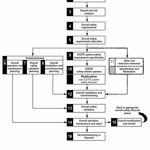You are currently viewing SemiWiki as a guest which gives you limited access to the site. To view blog comments and experience other SemiWiki features you must be a registered member. Registration is fast, simple, and absolutely free so please,
join our community today!
(With apologies to Pogo.) For all the great work that we are seeing in improving both software and hardware security, we – not the technology – are in many ways the weakest link in the security chain. Recent reports indicate we are surprisingly easy to fool, despite our much proclaimed awareness of risks.
In a recent experiment at … Read More
What happens when you get a panel of four executives together with an industry-leading journalist to discuss tradeoffs in IoT designs? After the obligatory introductions, Ed Sperling took this group into questions on power, performance, and integration.… Read More
Watching a spirited debate on Twitter this morning between Tom Peters and some of his followers reminded me of the plot of many spy movies: silently killing an opponent with a lethal injection of some exotic, undetectable poison. We are building in enormous risks in more and more big data systems.… Read More
Last week the Linley conference on mobile and wearables started with an overview and keynote address by the event’s namesake Linley Gwennap. His talk offered a few surprises and was informative all around. As you have seen recently reported here on SemiWiki, he sees smartphone shipments continuing to rise, but with a declining… Read More
A few years back before IoT became the buzzword, the industrial automation community had already talking about “smart sensors” since the mid-1990s. The impetus for those discussions was IEEE 1451, a family of standards for adding intelligence and wireless communications to sensors so they could be incorporated into field networks.… Read More
SemiWiki had another article recently making the case that in IoT applications, safety and security are intertwined, adding that both are important, but they are not the same thing. Mentor Graphics has weighed in with a new white paper trying to tie both issues to a methodology.
Industrial IoT – or IIoT as you’ll often see in shorthand… Read More
When automakers are thinking about the safety of an embedded system in a car, while it’s good to know the hardware has been comprehensively tested for safety-specific requirements, that isn’t much help if the software component of the system is not supplied with similarly robust guarantees.
The challenge is that the software … Read More
There has been a startling rise in a class of Android auto-rooting malware which is believed to affect over a quarter of a million phones in the US and well over a million in each of India and China. The attack has primarily infected older versions of Android (so far) – KitKat, JellyBean and Lolipop primarily.
The malware, known as Shedun… Read More
A global study sponsored by IBM and conducted by the Ponemon Institute found that the average cost of a data breach for companies surveyed has grown to $4 million, representing a 29 percent increase since 2013. With cybersecurity incidents continuing to increase with 64% more security incidents in 2015 than in 2014 the costs are… Read More
Synaptics is an understated innovator in the human interface and end user experience technology space, and many of the hottest smartphones, tablets and PCs have their technology inside. The Samsung Galaxy S7, Apple iPhone 6S, Dell XPS 15, Microsoft Surface and Surface Book, and HP ENVY are just a few of these products I’ve personally… Read More



